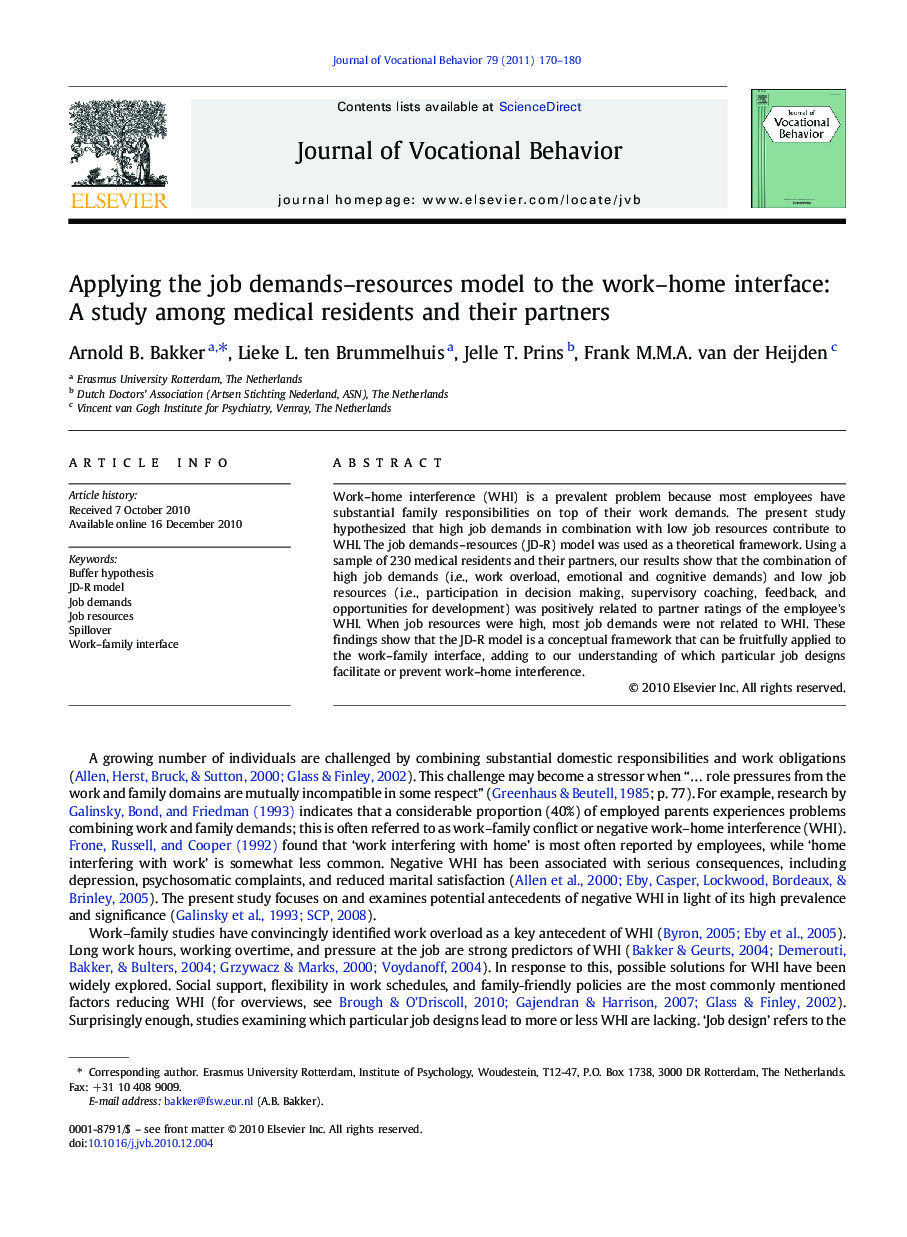| Article ID | Journal | Published Year | Pages | File Type |
|---|---|---|---|---|
| 887274 | Journal of Vocational Behavior | 2011 | 11 Pages |
Work–home interference (WHI) is a prevalent problem because most employees have substantial family responsibilities on top of their work demands. The present study hypothesized that high job demands in combination with low job resources contribute to WHI. The job demands–resources (JD-R) model was used as a theoretical framework. Using a sample of 230 medical residents and their partners, our results show that the combination of high job demands (i.e., work overload, emotional and cognitive demands) and low job resources (i.e., participation in decision making, supervisory coaching, feedback, and opportunities for development) was positively related to partner ratings of the employee's WHI. When job resources were high, most job demands were not related to WHI. These findings show that the JD-R model is a conceptual framework that can be fruitfully applied to the work–family interface, adding to our understanding of which particular job designs facilitate or prevent work–home interference.
